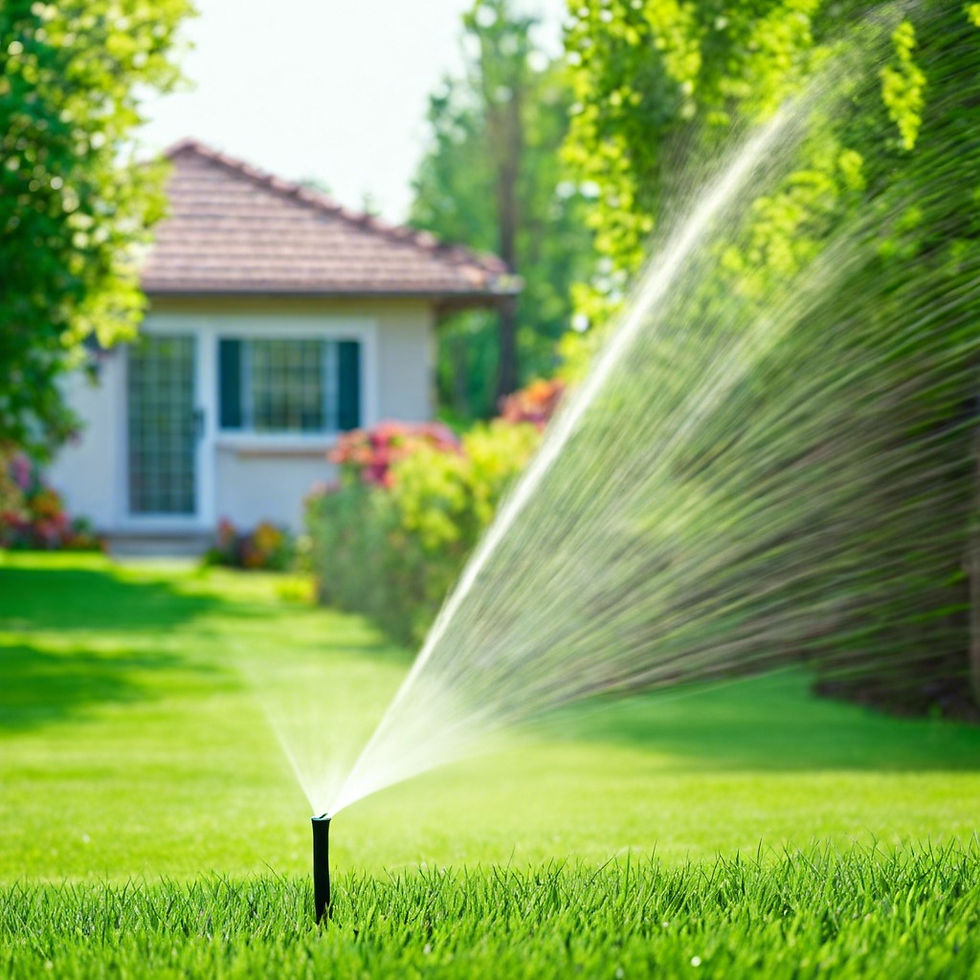Troubleshooting A Faulty Lawn Irrigation System
- Athom Designs

- Feb 28, 2020
- 2 min read
Like everything else, at some point, it may need some troubleshooting, which is why you’re here. While this system may seem complex, it’s not. Troubleshooting isn’t as difficult as you may think.
Signs of Irrigation System Issues
One or more sprinkler heads don’t work.
Sprinkler heads have low water pressure.
Sprinkler zones are not working.
There’s a leak around a zone valve.
There are leaks at the sprinkler heads.
What You’ll Need
Screwdrivers
Multimeter
Shovel
Manual
You can print one out or download the PDF file if you don’t have the manual. Look for the sprinkler system’s manufacture name and the model.
Use that information to look for the manual online.
Sprinkler Head Not Working
Non-working sprinkler heads are common. Usually, the reason for this is damage; maybe they get run over by a vehicle or lawnmower.
The first thing to do is confirm the issue. Look for the following:
There may be damage to the plastic casing.
The sprinkler head doesn’t pop up.
The water sprays wildly.
The water doesn’t spray at all.
The sprinkler head is broken.
Inspect the area if the head is damaged, and see if you can reset it manually.
You may need to correct the spray pattern. There could also be dirt, and if that’s the case, you may need to clean the head. If this doesn’t work, then you’ll need to have it repaired or replaced.
Sprinkler Zone Problems
When a sprinkler zone doesn’t turn on, it’s usually traced to an electrical signal malfunction. It could be a faulty valve, but that’s not as common.
If it’s just one zone, the voltage may be the issue. Use a multimeter to test how much voltage is hitting the inactive zone.
Use the common terminal and the zone terminal to see if the voltage is too low. Keep in mind that a normal voltage range is 24 to 28 volts. If it’s too low, then the controller may require a replacement.
There are other potential issues, such as a disconnected or damaged solenoid. A professional should inspect and fix this.
If more than one zone is not working, then the issue might be the transformer. You can use your multimeter to find out. Look for the 24 vac terminals and test them. They need to read near 22 volts, and if it’s too low, it may be time for a transformer replacement.
Leaks Around the Zone Valve
If you notice a leak around the zone valves, you may need to tighten the cover screws. If that doesn’t work or the screws are tight enough, it could be a damaged diaphragm.
The zone valve could have cracked, and if that’s the issue, it has to be replaced.
Hopefully, this information helps you find the issue. Maybe you’ll be able to fix it, but if not, at least you know what to expect after calling your technician.









Comments